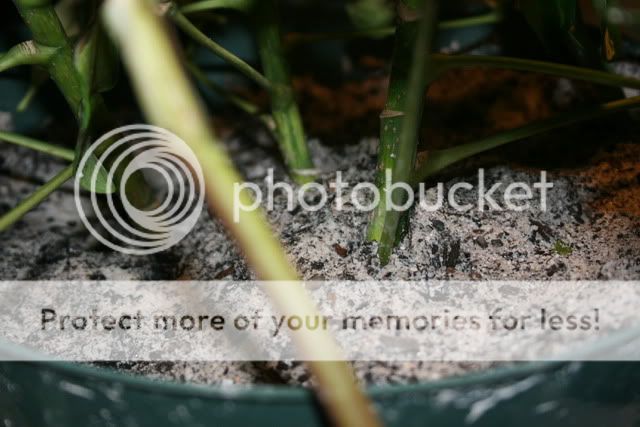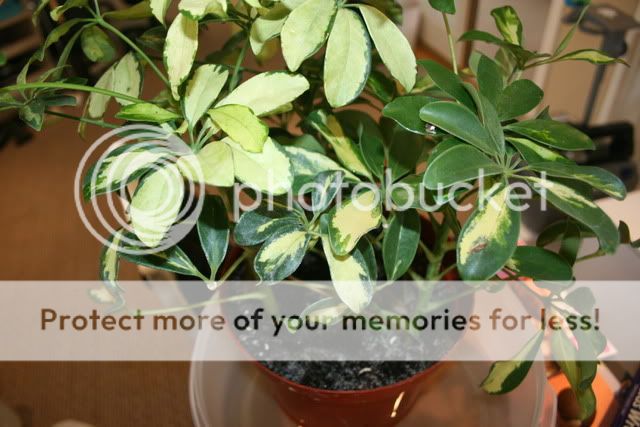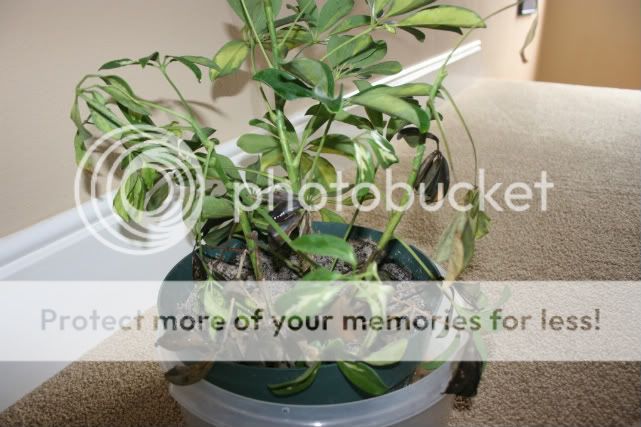This blog is all about my experimentation with plant soils, that began on Friday May 29th. After some extensive research I found that plants kept in high-watered/high-humidity conditions, need a more unique type of soil than the original houseplant. Original houseplants typically use loam soil, which is one of the most effective/common soils. There are also soils that are clay-based or sand-based (clay holds the most water, while sand holds the least). After much frustration over loosing plants due to high watering, I decided to abandon loam soil. I found that it retained to much water and was guaranteed to cause my plants to droop overtime (even though all my plants were elevated and had an efficient drainage setup). As of right now I am testing two different soil combinations. The first combination is %50 play sand and %50 coconut husk. I chose play sand because of it's ultra-fine grains and it's ability to somewhat compact (unlike other sands). The second combination is %50 play sand and %50 loam soil. Once again, I used sand in both of my soil mixtures because of it's very poor water absorption. I did not use %100 sand in my pots, because it contains no nutrients or efficient support for the root structure of the plants. I am using the same plants in both pots (dwarf schflerra), to reduce any skewed data.
June 05: As of right now the plants show absolutely no signs of drooping/over-watering. I will continually update this blog in order to describe the successes of my experiment.
Here are some pictures. The first picture is the sand/husk mixture, the second picture is the sand/loam mixture.


June 19: It has been exactly two weeks and I decided to provide some updates on my plants.
Play Sand/Coconut Husk mix: This mixture of soil is doing very well still. The plant has yet to drop leaves and become discolored. All of the stems still feel very strong and they all still have a bounce. The soil itself seems to be in great condition as well, there is still an even mix of the two types of soils and the topsoil is nice and damp, rather then soggy and wet. I have not found a single gnat around the plant. The drainage collector is collecting only water and has around the same amount of drainage each day.
Play Sand/Loam Soil: This soil seems to be turning into a problem. The plant is still holding most of its green, however some leaves are beginning to discolor and fall off. Several stems are beginning to bend and have little to no bounce. The pot is loosing sand after each misting, which means it is becoming increasingly composed of only loam soil. I have also noticed several gnats flying around the inside of the cage. The drainage collector is beginning to fill with many sand particles; the pot is catching less and less water each day.
As of right now, the coconut mix seems to be working better. I predict that the loam mixture will eventually cause the entire plant to droop. Here are some pictures of the drainage collectors. The coconut mixture is on the left (normal amount of water present), the loam mixture is on the right (little to no water and lots of sand).
(I could not post the pictures because I ran out of space, I will re-post them if the administrators allow me to do so)
June 29: It has been nearly two weeks since my last update on my plants so I have decided to post another one. This will most likely be my final post on the experiment, since it is now obvious which soil mixture works and which does not.
Play Sand/Coconut Husk mix: This mixture of soil is doing tremendously well. The plant has has only dropped several leaves (only because they were too close to heat lamps, etc) and it still has it's normal healthy colors (no dark spots or wilted leaves). All of the stems still feel very strong and they all still have a responsive bounce/sway. The soil is still in great condition; there still is an even mix of sand and coconut husk and the topsoil still stays damp and not soggy/wet. There is still no presence of gnats. The drainage collector is collecting only water and no other soil debris.
Play Sand/Loam Soil: This soil has indeed failed and caused the plant to die. The plant is no longer holding mostly green color, instead it has become mostly brown. Many leaves have fallen off and those that are remaining have blotches of dark colors and are beginning to wilt. Many of the stems have wilted (some have fallen off entirely) and not one stem has any bounce or sway when flicked. The pot has lost huge amounts of sand, which is covering the floor of the cage and plugging the drainage hole. They are now 10+ gnats flying around the plant and coming up from the soil.
The coconut husk and play sand mix is clearly the best soil mixture, none of the leaves or stems show any signs of over-watering and it has now been over a month. I believe this mixture worked better because the tough/rough coconut mixture was able to support the sand and prevent it from falling out. Whereas the loam soil became very soft when watered and allowed the sand to easily pass through and filter out of the bottom of the pot. Here are some pictures of the plants. The coconut mixture is on the top (no visible signs of over-watering), the loam mixture is on the bottom (clearly visible signs of over-watering).


This concludes my experiment. I have found that coconut husk and play sand makes a very effective soil mixture for plants that are in over-watered environments (like chameleon cages). I will most definitely use this soil mixture for all my chameleon plants from this day forward and I would strongly suggest that every chameleon keeper do the same. This soil is highly effective and it is the first plant I have kept that has shown no signs of over-watering; all plants I have owned prior to this experiment showed signs of over-watering in as little as 2 weeks. Best of all, I never found one gnat harboring around the husk/sand plant. I hope you found this blog to be a suitable source/reference for proper plant care and tips to promote longevity in you plants.
I gathered some of my research from these two very useful sites, http://www.drainagepro.com/cat/3380/ and http://ohioline.osu.edu/hyg-fact/3000/3068.html
June 05: As of right now the plants show absolutely no signs of drooping/over-watering. I will continually update this blog in order to describe the successes of my experiment.
Here are some pictures. The first picture is the sand/husk mixture, the second picture is the sand/loam mixture.


June 19: It has been exactly two weeks and I decided to provide some updates on my plants.
Play Sand/Coconut Husk mix: This mixture of soil is doing very well still. The plant has yet to drop leaves and become discolored. All of the stems still feel very strong and they all still have a bounce. The soil itself seems to be in great condition as well, there is still an even mix of the two types of soils and the topsoil is nice and damp, rather then soggy and wet. I have not found a single gnat around the plant. The drainage collector is collecting only water and has around the same amount of drainage each day.
Play Sand/Loam Soil: This soil seems to be turning into a problem. The plant is still holding most of its green, however some leaves are beginning to discolor and fall off. Several stems are beginning to bend and have little to no bounce. The pot is loosing sand after each misting, which means it is becoming increasingly composed of only loam soil. I have also noticed several gnats flying around the inside of the cage. The drainage collector is beginning to fill with many sand particles; the pot is catching less and less water each day.
As of right now, the coconut mix seems to be working better. I predict that the loam mixture will eventually cause the entire plant to droop. Here are some pictures of the drainage collectors. The coconut mixture is on the left (normal amount of water present), the loam mixture is on the right (little to no water and lots of sand).
(I could not post the pictures because I ran out of space, I will re-post them if the administrators allow me to do so)
June 29: It has been nearly two weeks since my last update on my plants so I have decided to post another one. This will most likely be my final post on the experiment, since it is now obvious which soil mixture works and which does not.
Play Sand/Coconut Husk mix: This mixture of soil is doing tremendously well. The plant has has only dropped several leaves (only because they were too close to heat lamps, etc) and it still has it's normal healthy colors (no dark spots or wilted leaves). All of the stems still feel very strong and they all still have a responsive bounce/sway. The soil is still in great condition; there still is an even mix of sand and coconut husk and the topsoil still stays damp and not soggy/wet. There is still no presence of gnats. The drainage collector is collecting only water and no other soil debris.
Play Sand/Loam Soil: This soil has indeed failed and caused the plant to die. The plant is no longer holding mostly green color, instead it has become mostly brown. Many leaves have fallen off and those that are remaining have blotches of dark colors and are beginning to wilt. Many of the stems have wilted (some have fallen off entirely) and not one stem has any bounce or sway when flicked. The pot has lost huge amounts of sand, which is covering the floor of the cage and plugging the drainage hole. They are now 10+ gnats flying around the plant and coming up from the soil.
The coconut husk and play sand mix is clearly the best soil mixture, none of the leaves or stems show any signs of over-watering and it has now been over a month. I believe this mixture worked better because the tough/rough coconut mixture was able to support the sand and prevent it from falling out. Whereas the loam soil became very soft when watered and allowed the sand to easily pass through and filter out of the bottom of the pot. Here are some pictures of the plants. The coconut mixture is on the top (no visible signs of over-watering), the loam mixture is on the bottom (clearly visible signs of over-watering).


This concludes my experiment. I have found that coconut husk and play sand makes a very effective soil mixture for plants that are in over-watered environments (like chameleon cages). I will most definitely use this soil mixture for all my chameleon plants from this day forward and I would strongly suggest that every chameleon keeper do the same. This soil is highly effective and it is the first plant I have kept that has shown no signs of over-watering; all plants I have owned prior to this experiment showed signs of over-watering in as little as 2 weeks. Best of all, I never found one gnat harboring around the husk/sand plant. I hope you found this blog to be a suitable source/reference for proper plant care and tips to promote longevity in you plants.
I gathered some of my research from these two very useful sites, http://www.drainagepro.com/cat/3380/ and http://ohioline.osu.edu/hyg-fact/3000/3068.html
